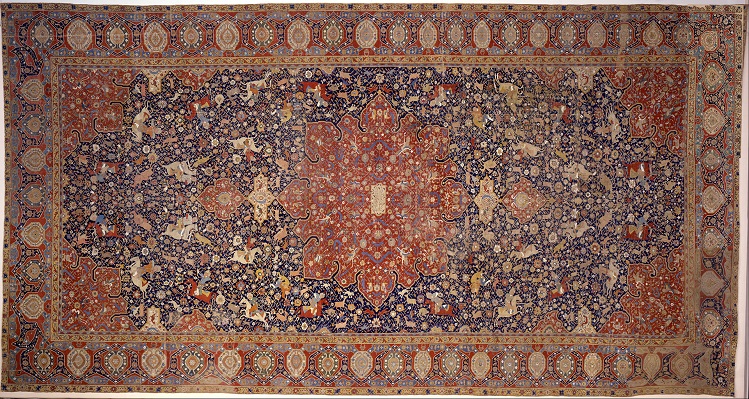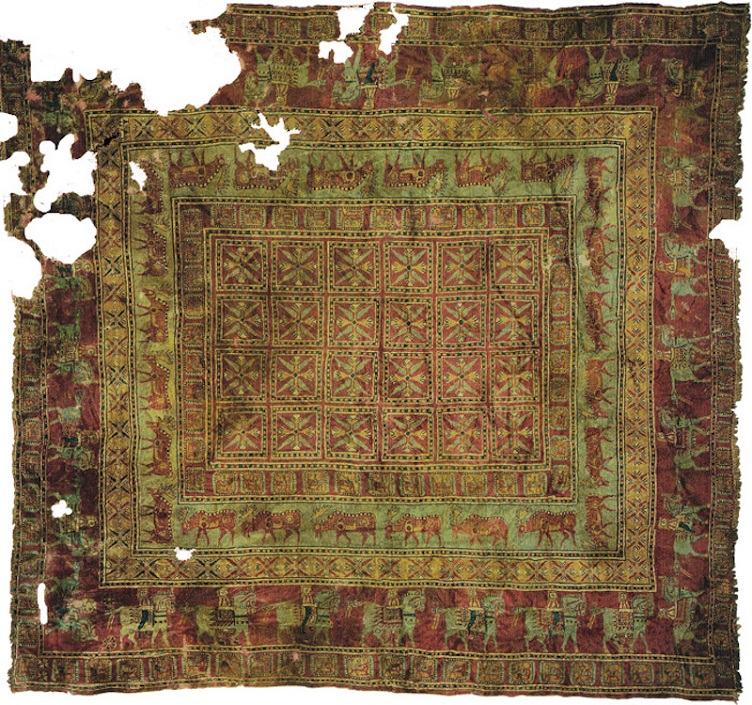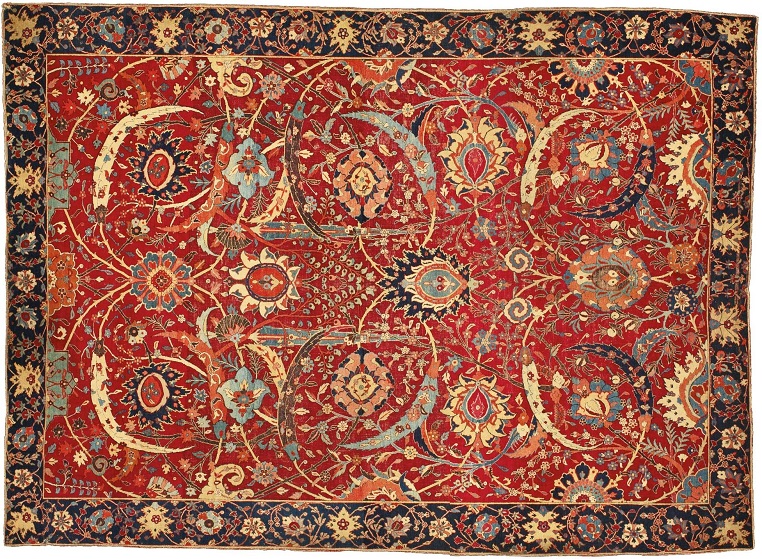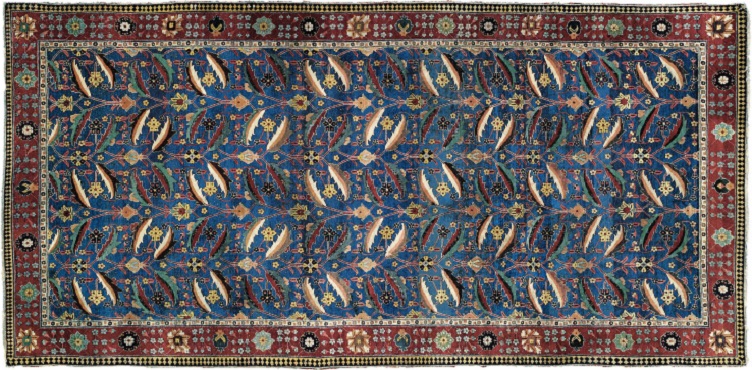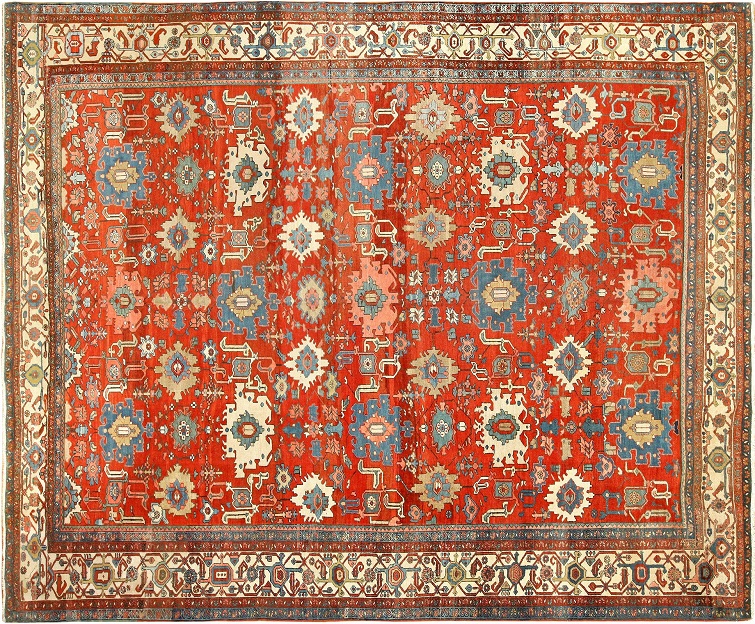A carpet is any decorative textile normally made of a thick material and now usually intended as a floor covering.
From the earliest times, man has used various means to separate himself from the cold, discomforting ground or floor surface he walked, sat and slept on.
Even before recorded history, animal hides and furs were used for this purpose. As time progressed, a variety of natural and fabricated materials have been used to provide a better level of comfort and durability.
The art of making carpets was probably developed on the plains of Central Asia several thousand years ago.
The earliest surviving carpet is the “Pazyryk carpet”, which dates from the 5th-4th century BC. It was excavated by Sergei Ivanovich Rudenko in 1949 from a Pazyryk burial mound in the Altai Mountains in Siberia. This richly colored carpet is 200 x 183 cm (6’6″ x 6’0″) and framed by a border of griffins. Although claimed by many cultures, this square tufted carpet, almost perfectly intact, is considered by many experts to be of Caucasian, specifically Armenian, origin.
Over the centuries, gradual improvements in weaving and evolution in design have produced more elaborate patterns. As early as 8th century B.C., wealthy families frequently adorned their homes with elaborately woven and magnificent rugs of historic significance.
In the 16th century, during the protection of the emperors, the art of carpets was developed in Persia and in India both technically and artistically, for example in court workshops. During this period originates two of the most splendid and famous carpets in the world, the Ardabil carpets, which can be seen at the Victoria and Albert Museum in London [photo below] and the Los Angeles County Museum of Art. The size of the London carpet is 10.5 × 5.3 meters (34.5 by 17.5 feet) . This carpets are probably manufactured in the city of Kashan in Persia by Maqsud.
Handmade carpets are works of art as well as functional objects. Indeed, many Oriental carpets have reached such heights of artistic expression that they have been held in the same regard in the East as objects of exceptional beauty and luxury that masterpieces of painting have been in the West.
The most expensive carpet ever sold at auction is the sickle-leaf vine scroll and palmette “vase” carpet, c. 1600 to 1650. After being displayed as an example of outstanding Persian carpet weaving in museums and galleries the carpet was estimated at $5 million to $7 million. Because the sickle-leaf design is the rarest of vase-technique carpet patterns and this is the only known example featuring a red background, Sotheby’s New York was able to sell the lot for $33.7 million on June 5, 2013.
The largest hand-woven carpet measures 5,630 square meters (60,600 square feet) and was manufactured by the Iran Carpet Company (Iran). It was created for the Abu Dhabi mosque and was measured in Abu Dhabi, UAE, in 2007. The carpet was created in 9 parts and assembled in the mosque. The carpet would have been around 6,000 square meters originally, but parts of it had to be taken away in order to fit it onto the floor in the mosque.
The term “carpet” is often used interchangeably with the term “rug”, although the term “carpet” can be applied to a floor covering that covers an entire house, whereas a “rug” is generally no bigger than a single room, and traditionally does not even span from one wall to another, and is typically not even attached as part of the floor.
The term “carpet” comes from Old French carpite. One derivation of the term states that the French term came from the Old Italian carpita, from the verb “carpire” meaning to pluck.
The term “rug” was first used in English in the 1550s, with the meaning “coarse fabric”; the meaning of “rug” evolved to “coverlet, wrap” (1590s), then “mat for the floor” (1808)”. The term is of Scandinavian origin.
The phrase “to sweep under the carpet” in its figurative sense was first recorded in 1963.
Rolling out the red carpet is an expression which means to welcome a guest lavishly and handsomely. In some cases, an actual red carpet is used for VIPs and celebrities to walk on, such as at the Cannes Film Festival and when foreign dignitaries are welcomed to a country.
There are many stories about magic carpets, legendary flying carpets that can be used to transport people who are on it instantaneously or quickly to their destination. Disney’s Aladdin depicts a magic carpet found by Aladdin and Abu in the Cave of Wonders while trying to find Genie’s lamp. Aladdin and Jasmine ride on
him to go on a ride around the world.
The GoodWeave labelling scheme used throughout Europe and North America assures that child labour has not been used: importers pay for the labels, and the revenue collected is used to monitor centres of production and educate previously exploited children.

